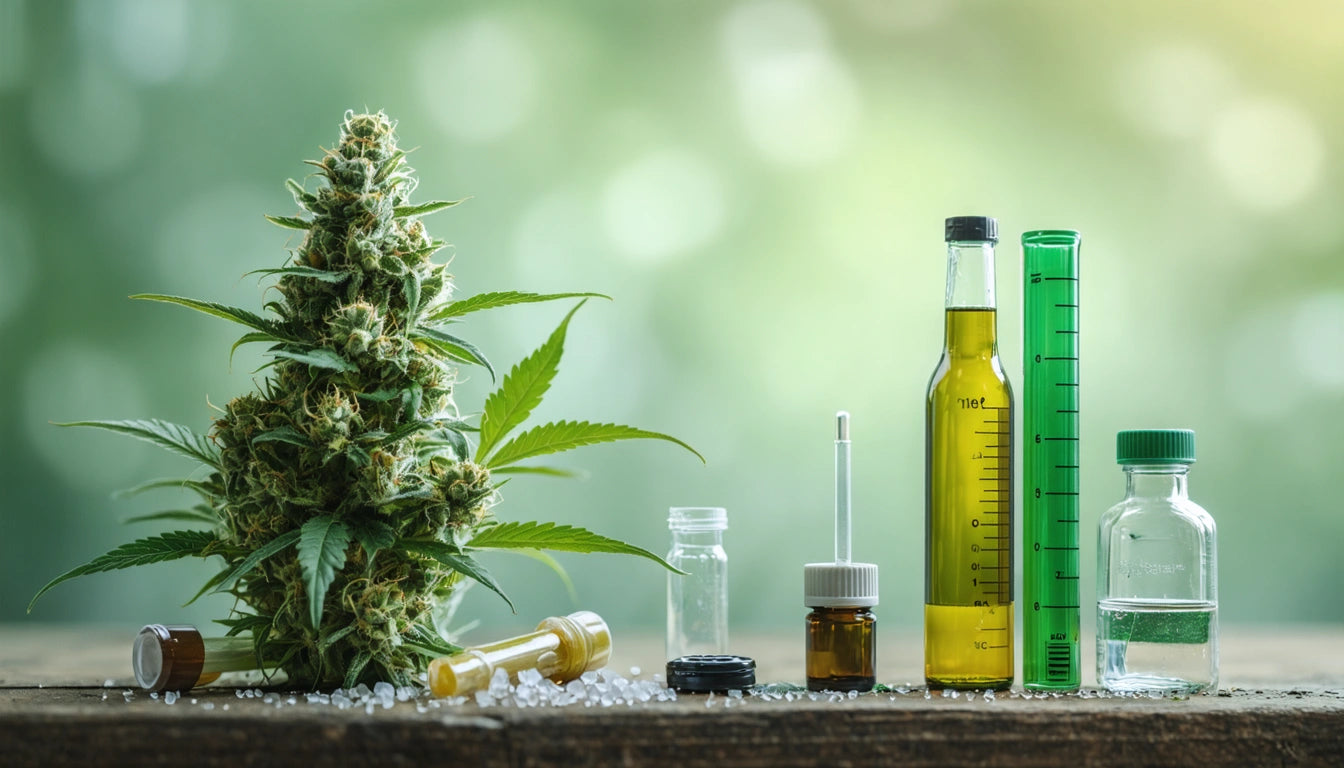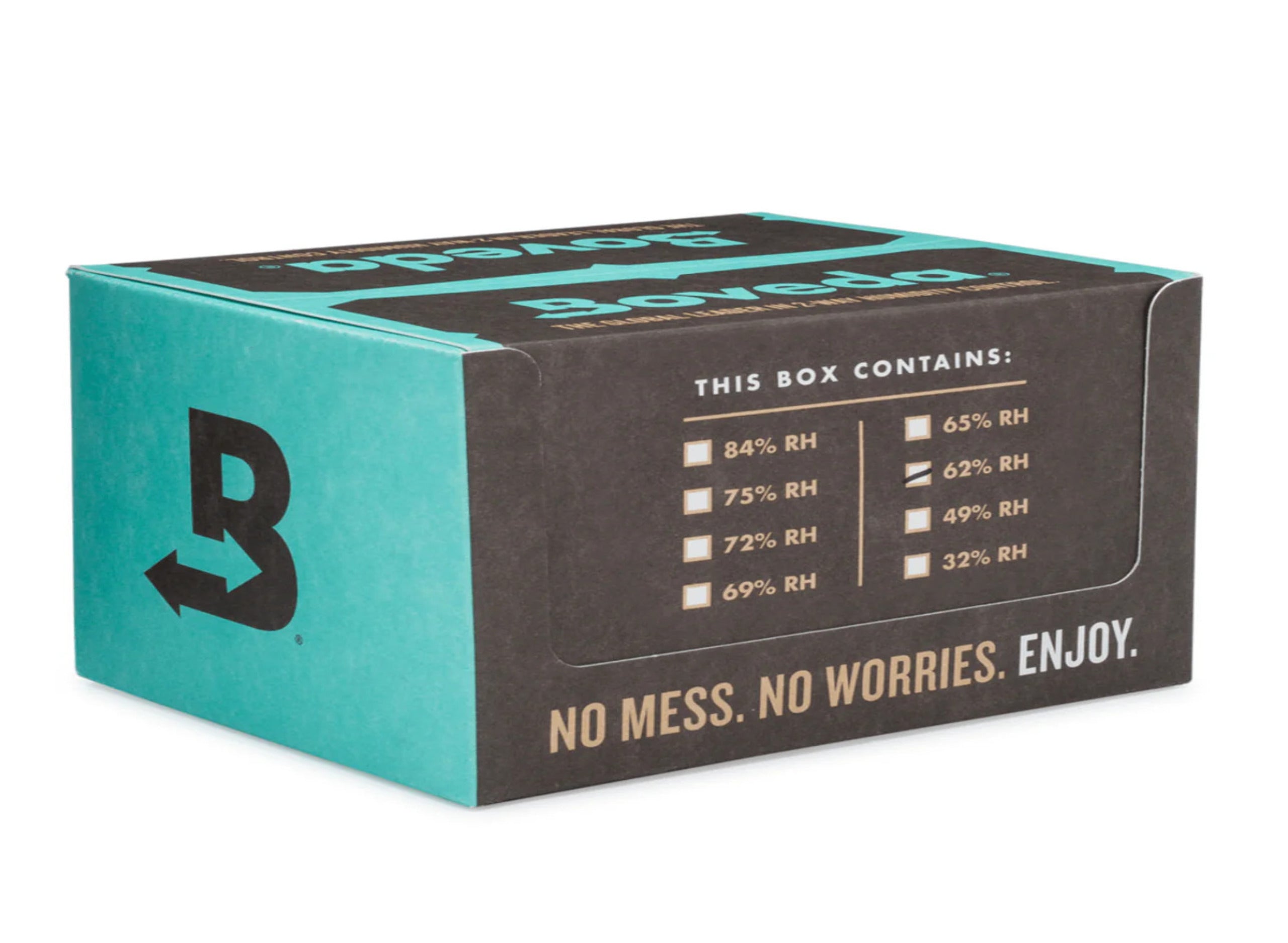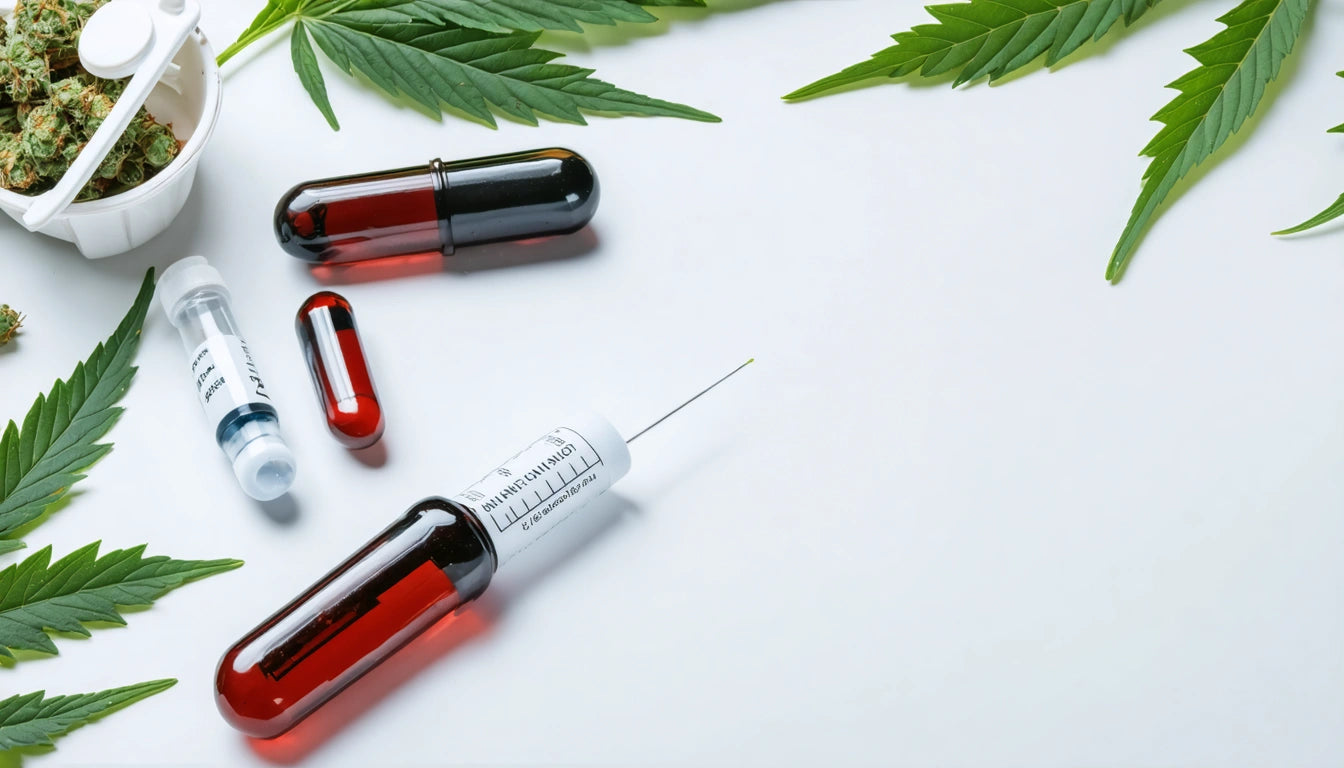Table of Contents
Understanding THC Content: How Much THC is in a Gram of Weed?
Cannabis potency has increased dramatically over the decades, leaving many consumers wondering exactly how much THC they're consuming. Whether you're a medical patient tracking your dosage or a recreational user trying to understand product labels, knowing how much THC is in a gram of weed is essential information for responsible consumption.
THC Basics: Understanding Cannabis Potency
THC (tetrahydrocannabinol) is the primary psychoactive compound in cannabis responsible for the characteristic high. When discussing cannabis potency, THC content is typically expressed as a percentage of the total dry weight.
Modern cannabis strains commonly contain between 15-25% THC, though some premium varieties can reach 30% or higher. This means that in a single gram of cannabis, you could have anywhere from 150mg to 300mg of THC, depending on the strain's potency.
Measuring THC Content in Cannabis
Cannabis potency is determined through laboratory testing using methods like High-Performance Liquid Chromatography (HPLC) or Gas Chromatography (GC). These tests analyze the cannabinoid profile and determine the exact percentage of THC and other compounds.
Understanding Percentages vs. Milligrams
When a product label indicates 20% THC, this means that 20% of the dry weight consists of THC. To convert this to milligrams:
- 1 gram = 1,000 milligrams
- 20% of 1,000mg = 200mg of THC
- Therefore, a gram of 20% THC cannabis contains approximately 200mg of THC
For larger quantities, the calculation scales proportionally. For example, an ounce (28 grams) of 20% THC cannabis would contain approximately 5,600mg of THC.
Calculating THC in a Gram of Cannabis
To determine how much THC is in your cannabis, use this simple formula:
THC (mg) = Weight (g) × THC percentage × 10
For example:
- 1g of 15% THC cannabis: 1 × 15 × 10 = 150mg THC
- 1g of 25% THC cannabis: 1 × 25 × 10 = 250mg THC
- 3.5g (eighth) of 20% THC cannabis: 3.5 × 20 × 10 = 700mg THC
Understanding these calculations is particularly important when using proper THC dosage guidelines, which typically recommend starting with just 2-5mg for new users.
Factors Affecting THC Content
Several factors influence the THC content in cannabis:
Genetics
Strain genetics play the most significant role in determining potential THC content. Some strains are specifically bred for high THC production, while others may prioritize other cannabinoids like CBD.
Growing Conditions
Environmental factors such as light exposure, nutrients, and growing techniques significantly impact cannabinoid development. Optimal growing conditions can maximize a plant's genetic potential for THC production.
Harvest Timing
The timing of harvest affects potency. Cannabinoid production peaks at specific times during the flowering stage, and harvesting at the optimal moment can maximize THC content.
Storage Conditions
Proper storage is crucial for preserving THC potency. Light, heat, and oxygen exposure can degrade THC over time. Using high-quality storage solutions like mylar bags with proper sealing can help maintain potency by protecting against environmental factors that cause degradation.
Consumption Methods and THC Delivery
The amount of THC that actually enters your system varies significantly based on consumption method:
Smoking
When smoking cannabis, approximately 30-50% of the available THC is actually absorbed into the bloodstream. This means that smoking a joint containing 200mg of THC might deliver 60-100mg to your system.
Vaporizing
Vaporizing typically offers higher bioavailability than smoking, with approximately 50-80% of the THC being absorbed. This increased efficiency means you may need less cannabis to achieve similar effects.
Edibles
When cannabis is consumed orally, THC undergoes a transformation in the liver, converting to 11-hydroxy-THC, which is more potent. However, only about 4-12% of the original THC content reaches the bloodstream. Despite this lower bioavailability, edibles often produce stronger effects due to the potency of 11-hydroxy-THC.
For context, a typical joint contains approximately 0.3-0.5 grams of cannabis. With 20% THC cannabis, that's about 60-100mg of THC per joint, though the actual amount absorbed will be lower. Understanding joint THC content can help consumers better gauge their intake.
Practical Applications of THC Measurements
Understanding THC content has several practical applications beyond simple curiosity:
Dosage Control
Knowing the THC content allows for more precise dosing, especially important for medical patients who need consistent effects. For recreational users, it helps prevent accidental overconsumption.
Value Assessment
THC content can be used to evaluate the value of cannabis products. Higher potency products may provide more THC per dollar, though other factors like terpene profiles also contribute to quality.
Tolerance Management
Regular cannabis users develop tolerance to THC over time. Understanding potency can help users manage their consumption to maintain effectiveness while minimizing tolerance buildup.
For those concerned about legal limits and consumption guidelines, knowing exact THC content is essential for compliance and responsible use.
Whether you're a casual user or a medical patient, understanding how much THC is in a gram of weed empowers you to make informed decisions about your cannabis consumption, helping to ensure both enjoyable and safe experiences.











Leave a comment
All comments are moderated before being published.
This site is protected by hCaptcha and the hCaptcha Privacy Policy and Terms of Service apply.